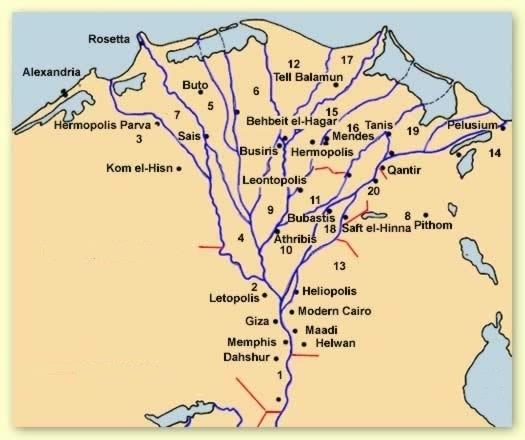Local time Tuesday 4:45 PM | ||
 | ||
Weather 22°C, Wind NW at 6 km/h, 36% Humidity | ||
Busiris (Greek: Βούσιρις, Herod. i. 59, 61,165; Strabo xvii. p. 802; Plut. Is. et Osir. 30; Ptol. iv. 5. § 51; Plin. v. 9. s. 11: Hierocl. p. 725; Steph. B. s. v.) was an ancient city in Lower Egypt, located at the present-day Abu Sir Bana.
Contents
- Map of Abu Sir Bana Abu Sirbana Samannoud Gharbia Governorate Egypt
- Ancient History
- Ecclesiastical history
- Titular see
- References
Map of Abu Sir Bana, Abu Sirbana, Samannoud, Gharbia Governorate, Egypt
Ancient History
In antiquity, Busiris was the chief town of the Ati nome in Egypt. It stood west of Sais, near the Phatnitic mouth on the western bank of the Damietta Branch of the Nile. The city's pharaonic name was Djedu.
The town and nome of Busiris were allotted to the Hermotybian division of the Egyptian militia. It was regarded as one of the birthplaces of the god of the underworld Osiris, as perhaps, etymologically, the name itself implies. The festival of Isis at Busiris came next in splendor and importance to that of Artemis at Bubastis in the Egyptian calendar. Considerable ruins are still extant.
The temple of Isis, indeed, with the hamlet which sprang up around it, stood probably at a short distance without the walls of Busiris itself, for Pliny (v. 10. s. 11) mentions Isidis oppidum in the neighbourhood of the town. The ruins of the temple are still visible, a little to the north of Abusir, at the hamlet of Bahheyt. (Pococke, Travels, vol. i. p. 34; Minutoli, p. 304.)
It was in the Roman province of Aegyptus secundus.
Ecclesiastical history
Later, Busiris became a Christian bishopric. Extant documents provide the name of two of its early bishops: Hermaeon and Athanasius, the latter of whom took part in the Robber Council of Ephesus in 449. In later centuries, from the 8th onward, the name of several of its non-Chalcedonian bishops are also known.
Titular see
No longer a residential bishopric, Busiris is today listed by the Catholic Church as a titular see of the lowest (episcopal) rank.
The nominally revived diocese had the following near-consecutive incumbents :
